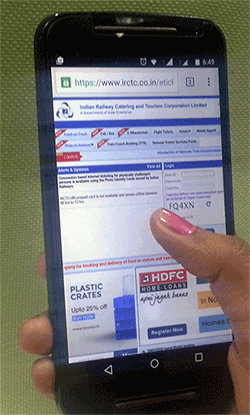
Internet for all, promises Google

 Internet giant Google Inc has joined hands with Indian Railways and RailTel Corporation of India Ltd, to provide free Wi-Fi access at railway stations across the country. As one of its first large-scale public-private partnership projects, the company will provide free Wi-Fi access at 100 railway stations by end of 2016.
Internet giant Google Inc has joined hands with Indian Railways and RailTel Corporation of India Ltd, to provide free Wi-Fi access at railway stations across the country. As one of its first large-scale public-private partnership projects, the company will provide free Wi-Fi access at 100 railway stations by end of 2016.
"Mumbai Central will be the first station, where free wi-fi service will be launched. After that we we will add one station per zone taking the number to 100 by the end of next year," said Marian Croak, vice-president, access strategy and emerging markets, Google Inc.
In all, free Wi-Fi access will be provided at 400 railway stations.

Declining to divulge the speed at which people will be able to access internet on this free Wi-Fi service, Gulzar Azad, head of access programs, India, Google India Pvt Ltd, said it will offer "good" speed at various railway stations, enabling people to watch high definition quality video and picture heavy sites.
Average internet connection speed in India is 2.3 Mbps.
Moreover, depending on the number of footfalls or the socio-economic profile of the people who gather at each station gets every day, the company plans to set up various access points to ensure continuous access to the internet.

However, with free Wi-Fi, comes the issue of earning revenue. Google claims to have chalked out various business models to solve this issue. Speaking about one such model called, 'wholesale', Croak explained, "In this model, we get advertisers as sponsors. So when a consumer using the Wi-Fi will open Chrome on her smartphone, the first page will display the sponsor's logo."
Moreover, Google's 'Project Loon' which had earlier hit a roadblock due to concern over spectrum sharing, may once again see the light of the day with the internet giant claiming to have found a solution for sharing of spectrum with telecom service providers. Croak said the Google team will present the idea to the Indian government.
Developed by Google X, 'Project Loon' was started with the aim of providing internet access to rural and remote areas. As part of the process, Google uses balloons placed at an altitude of about 18 km to create an aerial wireless network with up to 4G-LTE speeds.

Earlier in the day, Sunder Pichai, CEO, Google Inc had said that the company plans to turn it into a full-fledged programme covering 300,000 villages. Google had piloted the programme in 1000 villages in three states.
